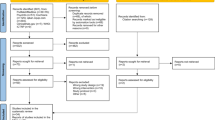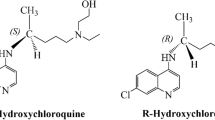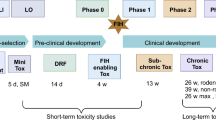Abstract
IN a previous study1 of the morphine antagonist cyprenorphine hydrochloride (M 285), we examined the possible hallucinogenic effects of this analgesic compound on the light-reinforced behaviour of rats. Control animals receiving saline injections showed typically increased response rates during test sessions in which response–contingent light (RCL) was available, whereas M 285 (0.3 mg/kg) depressed this light reinforcement (LR) effect. The drug had no effect on operant or non-reinforced responding, and so we postulated that it had its principal effect in relation to the relative significance of the stimulation to the animal. More specifically, this drug (in common with other hallucinogenic agents) may raise the arousal level of an animal that is relatively deprived visually, so that it needs very little further stimulation.
This is a preview of subscription content, access via your institution
Access options
Subscribe to this journal
Receive 51 print issues and online access
$199.00 per year
only $3.90 per issue
Buy this article
- Purchase on SpringerLink
- Instant access to full article PDF
Prices may be subject to local taxes which are calculated during checkout
Similar content being viewed by others
References
Lowe, G., and Williams, D. I., Nature, 224, 1226 (1969).
Williams, D. I., and Lowe, G., Brit. J. Psychol., 61, 379 (1970).
Author information
Authors and Affiliations
Rights and permissions
About this article
Cite this article
LOWE, G., WILLIAMS, D. Effects of Cyprenorphine Hydrochloride on Sensory Reinforcement in the Rat. Nature 233, 208–209 (1971). https://doi.org/10.1038/233208a0
Received:
Issue date:
DOI: https://doi.org/10.1038/233208a0
This article is cited by
-
Role of Ribosomal Subunits in Eukaryotic Protein Chain Initiation
Nature (1972)
-
The effect of LSD-25 on light-reinforced behaviour in the rat
Psychopharmacologia (1972)



